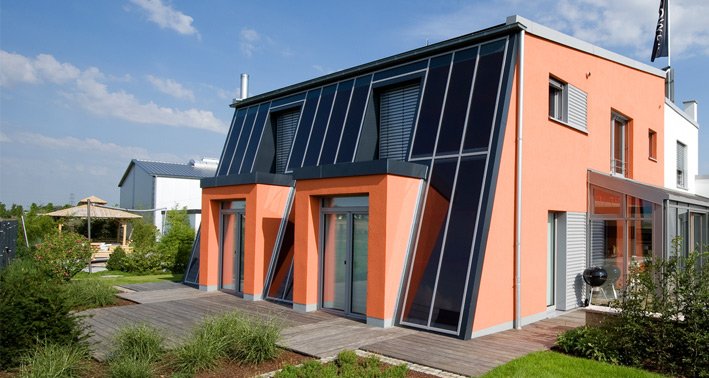Using Shadows Effectively

The technology everyone is talking about right now is power optimizers. They are electronic components that work directly in the PV module to ensure that the maximum amount of DC power can be extracted from each and every solar panel. This is particularly advantageous when modules are in the shade, as the optimizers can “save” as much as 25% of the energy lost through shading. Joachim Laschinski, technology expert at SMA, explains what the phenomenon of shading actually entails and how SMA has solved this problem.
What impact does shading actually have?
Joachim: It goes without saying that shading has an impact on the PV yield and cannot always be avoided entirely. This phenomenon includes shadows caused by chimneys, trees or temporary shadows cast by leaves. As such, optimal system planning ensures, first and foremost, that during periods with the highest solar irradiation as little shadow as possible is cast onto the modules. And when systems are intelligently designed, the impact of shading on the total yield of a PV system is still only very low. For example, a well-planned, heavily shaded PV system will have significantly less than 5% yield reduction per year.
What is SMA’s solution to shading?
Joachim: In addition to continuously enhancing the highly robust MPP tracker (maximum power point = optimum power of a single PV module), which every inverter contains, SMA has also developed OptiTrac Global Peak. This function reliably finds the global maximum power point of each PV module string which means that the energy available in any shading scenario will be used as effectively as possible.
What results is this technology delivering?
Joachim: The annual yield of a slightly shaded PV system with OptiTrac Global Peak is only around 1% lower than the yield of an unshaded system. For heavily shaded systems, this figure is around 3%. And what we’re particularly proud of is the lack of “side effects”—the yields of unshaded PV systems that work with OptiTrac Global Peak (which they do not actually need to do) remain as high as ever. The patented process is so quick and precise that the yield losses are well below one-tenth of a percent and the function can always be activated, irrespective of the particular PV system.
How long has this technology been available on the market and how has it been received so far?
Joachim: SMA launched OptiTrac Global Peak onto the market back in 2009. The technology has not only proven itself, it has also prompted competitors to offer similar functions. A major advantage compared with optimizers is that the technology is integrated into the inverters. This gets rid of the costs of separate attachment, maintenance and exchange entirely. And of course, in addition to increased yields, this also has an impact on the reliability and the overall costs of the PV system.
A final question: Are PV systems effective at all if they are heavily shaded?
Joachim: They can absolutely be effective and there are often also aesthetic reasons for this. However, you should avoid operating unshaded PV modules together in a string with other modules that are frequently or regularly shaded during periods with the highest levels of solar irradiation. After all, even if 25% of yield losses due to shading can be avoided by using power optimizers, as the manufacturers promise, unavoidable losses will still amount to 75%. Therefore, for truly complicated roof surfaces I would recommend micro inverters. They are a good solution for individual PV modules that are also heavily impacted by shading. For all other cases, diligent planning and system design in addition to optimal MPP tracking with OptiTrac Global Peak are the right solutions.
Thanks for the interview.
About the person
Joachim has been working in the field of photovoltaics for more than 25 years. At SMA, he has worked in different positions in inverter development and strategic product management. As a system architect, he is now responsible for optimizing the product portfolio for solar energy supply systems.


Feel free to contribute!